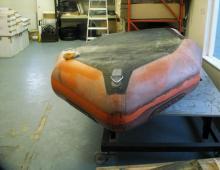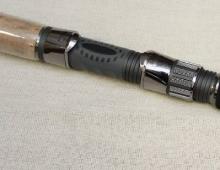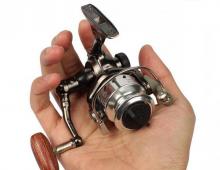feeder equipment
Feeder equipment is the main component of the feeder rod, which allows the angler to fix even the slightest touch of the fish to the bait. Proper equipment of the feeder contributes to feeding fish at the point of fishing, the implementation of hooking and simplification of playing trophy specimens.

To date, there are a lot of types of feeder equipment, but not all of them are effective and only a few of them have become widespread among fishermen, these are such gear:
- The most popular feeder rig is the paternoster. It is considered the most reliable and popular equipment among fishing enthusiasts.
- No less popular is the Gardner loop, which differs from the others in its ease of manufacture and installation, but is inferior in sensitivity to the asymmetric loop.
- Asymmetric loop - tackle with great sensitivity. It is used mainly in strong currents, as it allows you to avoid twisting the leash around the main fishing line.
- The symmetrical loop is not inferior in sensitivity to the previous equipment, but is used in reservoirs with stagnant water or very weak current.
- Feeder tackle helicopter is an improved and modernized type of paternoster. A feature of the installation is the fastening of the feeder at the end of the main fishing line and the leash sliding above it. Perfectly manifests itself when fishing in the current, when the fish are not too active.
- Equipment for feeder with anti-twist. A feature of the installation is the fastening of the feeder on the tube through which the main fishing line is threaded. But the presence of a large number of additional elements makes it difficult to catch cautious fish.
- Combine. This is a kind of symbiosis of tackle with an anti-twist and a paternoster. Only now the feeder is attached to the tube using a piece of fishing line. If you get hooked, you will lose one feeder, and the rest of the components will remain intact.
- Feeder equipment inline. The feeder slides along the main line due to the fact that it is attached only to the carabiner. The movement points are usually fixed with a special stopper. A leash is attached to the end of the main line.
Paternoster (gardner feeder rig)
The Gardner loop is considered one of the most versatile and simple feeder rigs. If you know how to knit elementary, then you can make a paternoster in a few minutes. The simplicity of this tackle lies in the fact that it is done only on a segment of the main fishing line and with the help of additional knots. The main thing is not to forget to moisten them before tightening.

First you need to make a small loop at the end or a regular fishing line. It is to this loop that the leash with hooks will then be attached. Then step back from this loop about 15 centimeters and make another one. The size of this loop depends on how you prefer to mount the feeder on the rig. If you are going to fasten the feeder “loop to loop”, then you need to make larger sizes, and if directly through the swivel with a carabiner, then a small loop will be enough.
Everything, now you just need to fix the feeder and the Paternoster feeder equipment is ready for testing in real fishing conditions.
The whole manufacturing process consists in separately manufacturing a loop system and fixing leashes with a feeder using special latches. In order to tie an asymmetrical loop, you need to take a piece of fishing line, about 1.5 meters long and about 0.4 mm in diameter. The main thing is that the fishing line has great rigidity.
The prepared piece of fishing line is folded in half, while one side is made 10 cm longer than the other. First you need to make a loop for using a double knot. After that, you need to do the most difficult thing, you need to mount it in such a way that it always remains straight and is rigid enough. This is done so that the leash does not overlap with the main fishing line.

After that, you need to take a piece of double fishing line and make a twist about 15 centimeters long out of it, twisting must be completed with a double knot. Then you need to thread the swivel onto a long piece of fishing line. Now you just need to measure the required length of the loop and tighten the knot. On average, the long side should be about 50 cm, and the short side should be 40 cm.
The feeder equipment with a symmetrical loop is done in exactly the same way, only both sides remain the same length. Then you need to tie a swivel to the end of the tackle, for which it will be attached to the main fishing line. It is important to cut the ends of the fishing line very well.
Making feeder gear for a helicopter is quite simple and fast. First you need to put a stopper on the fishing line, a swivel with a carabiner to which the leash and cambric will then be attached. At the end of the fishing line, it is necessary to mount a fastener, to which the feeder will then be attached.
Then you need to tightly put the cambric on one of the ears of the swivel. The feeder is usually attached at a distance of about 20 cm from the leash, some anglers try to make the distance no more than 5 cm. The main thing is that the stoppers do not move spontaneously and sit very firmly in one position.

One of the simplest and most widely used is the feeder rig with an anti-twist. The long part of the tube is made turned towards the leash to minimize the possibility of the leash overlapping.
For installation, it is necessary to put the tube on the main fishing line and fix it on one side with a bead, and on the other with a swivel. Then you need to mount the leash to the swivel.

Feeder tackle harvester
This equipment is also based on the use of an anti-twist tube. Only she has one feature, a loop of about 10 cm in length is tied to the swivel in the middle of the tube. And a feeder is attached to this loop. Such gear can be quite diverse, anglers are constantly experimenting using different tubes and changing the length of the loops. The main fishing line is passed through the tube, which is fixed with the help of a cambric.

This type of feeder equipment provides for fastening the feeder to the main line in a stationary or mobile state. A swivel and a stopper are attached to the main fishing line, and a loop is tied at its end for further fastening of the leash. The feeder is attached to the fishing line directly with a carabiner. Some prefer to make the feeder fixed with additional stoppers.
It is with the help of such equipment that the equipment of the “method” type, which has made a sensation among lovers of carp fishing, is made. A fishing line is passed through it, stoppers are placed and a loop for a leash is knitted. On the pond, the feeder is filled with bait and a hook is inserted into it.

If you are fishing with a feeder in the current, then not only do you need to know how to hold the feeder on the baited point, you also need to choose the right tackle. Today, the choice of gear is very large, but only a few of them are used, these are the paternoster, the asymmetrical and symmetrical loop, as well as the helicopter and the harvester.
And many have repeatedly raised the question of which of these gear is better to catch on the course? There is no single answer, it all depends on many factors, but here are some general tips that you can consider, and that's what we'll do.
There are a lot of tips on how to keep a feeder feeder at a bait point, we will not talk about all of them, but will only give the basic rules that every self-respecting fisherman must know:
- It is necessary to use a fishing line of the smallest possible diameter;
- The mass of the feeder must be selected in accordance with the speed of the current, as well as its shape;
- The rod should be positioned as high as possible to reduce line contact with the water.
![]()
The retention of the load at the bottom practically does not depend on the choice of equipment, but it affects the frequency of tangling the leashes. Balancing also affects this indicator. If you install a feeder that is too heavy, you will not be able to hook a cautious fish, the same situation will happen with a sinker. But when using a light sinker, the tackle can simply wash off to the side. That is, you need to choose the weight of the equipment in a balanced way and take the average value, so that it does not wash away, but does not scare away the fish.
The mistake many novice anglers make is to neglect the balance of the tackle. After all, at first glance it seems like a trifle, but it only seems so. By choosing a load of optimal weight for the speed of the current, you will achieve the maximum effect from the tackle.
Recently, the paternoster feeder rig has become the most popular and reliable of all rigs. This equipment can be called universal to some extent, as it is used in various fishing conditions, including in the course and in still water.

The advantages of this installation are ease of manufacture and a very low probability of tangling the leash. Many anglers, having used a paternoster once, no longer use other types of tackle. Some knit it on a regular fishing line, others on a braided line, and still others on a shock leader.
Disadvantages appear only when using short leashes, they begin to get confused. If it becomes necessary to use short leashes, then it is better to lean towards mounting an asymmetrical and symmetrical loop.
Catching in stagnant water is sometimes more difficult than in a current, here the main difficulty lies in luring a flock of fish to a rig. The key factor in such fishing is the correct choice of the place of fishing. It is recommended to select various anomalies at the bottom (preferably holes) and then start feeding them.
You can search for holes at the bottom using a marker or rod. As soon as you decide on the place of fishing, you need to fix the fishing line with a locking knot or clip and start baiting. The main thing is to constantly throw bait at one point.

When fishing on a feeder in stagnant water, a symmetrical loop feeder rig is used in Chaga, a little less often a paternoster. The weight of the feeder is taken on the order of 30-40 grams, and the shape is preferably square or pear-shaped.



